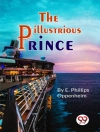Hugh Walpole’s ‘The Sea Tower’ is a masterfully crafted novel that merges psychological depth with elements of suspense and adventure. Set against the backdrop of the rugged and mystifying Wuthering Coast, Walpole’s narrative unfolds through richly drawn characters grappling with their inner demons amidst the relentless forces of nature. The literary style is marked by Walpole’s vivid descriptions and atmospheric tension, which evoke a profound sense of place while exploring themes of isolation, human struggle, and the quest for identity. The novel’s structure recalls contemporary works of the early 20th century, effortlessly intertwining the personal with the universal, inviting readers to reflect on the complexities of the human experience. Hugh Walpole was a prominent figure in British literature, an author deeply influenced by his own experiences of loss and longing, particularly in the aftermath of World War I. His fascination with the interplay of human emotions against the backdrop of the natural world is evident throughout his works. Walpole’s personal history enriched his narrative voice, allowing him to delve into the psyche of his characters with both sensitivity and acuity, giving rise to a story that resonates on multiple levels. For readers seeking an intricate exploration of the human condition enveloped in a gripping story, ‘The Sea Tower’ is a compelling choice. This novel not only captivates with its rich prose and atmospheric setting but also provokes thoughtful engagement with existential themes, making it a must-have for anyone interested in early 20th-century literature.
Giới thiệu về tác giả
Sir Hugh Seymour Walpole (1884–1941) was a prolific English novelist and a prominent figure in British literary circles during the early 20th century. Walpole, born in New Zealand to an Anglican clergyman and his wife, spent the majority of his life in England. He was educated at Cambridge and his literary career was bolstered by early critical acclaim with his third novel, ‘Mr. Perrin and Mr. Traill’. Walpole’s work is characterized by a keen insight into human psychology, narrative dexterity, and the ability to blend the macabre with the mundane to create compelling fiction. His oeuvre is extensive, encompassing over 30 novels, in addition to short story collections, plays, and a history of the English novel. Among his notable works is ‘The Herries Chronicles’, a family saga that secured his popularity. ‘The Sea Tower’, while less well-known, exemplifies Walpole’s command over the gothic elements and his evocation of setting as a character in the narrative. With a penchant for exploring the subtleties of human relationships and societal constraints, he developed a narrative style that combined realism with romanticism. Although Walpole’s popularity waned posthumously, his contribution to early 20th-century literature remains significant for it epitomizes the transitional nature of the period, bridging Victorian sensibilities with Modernist innovations.












